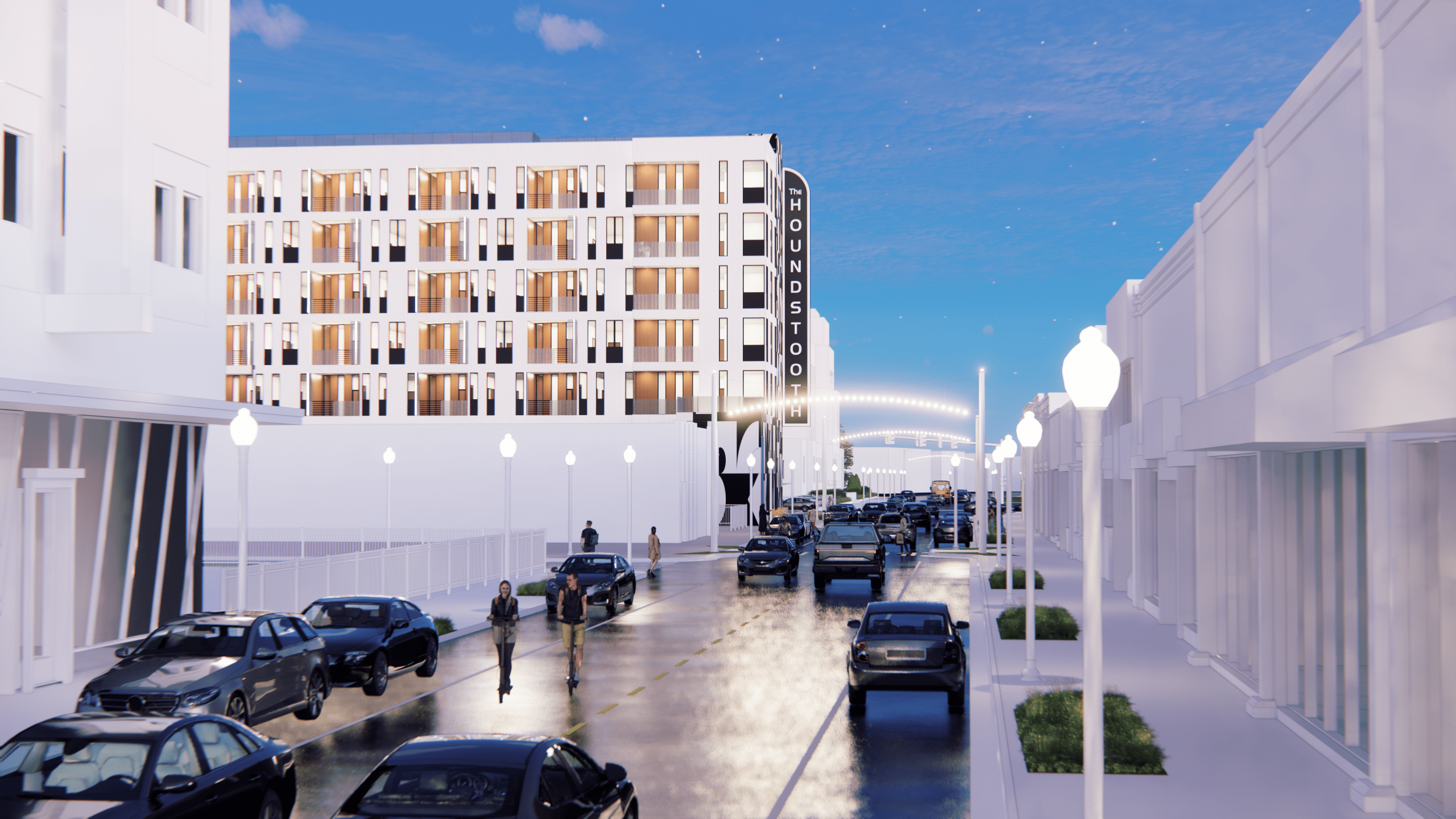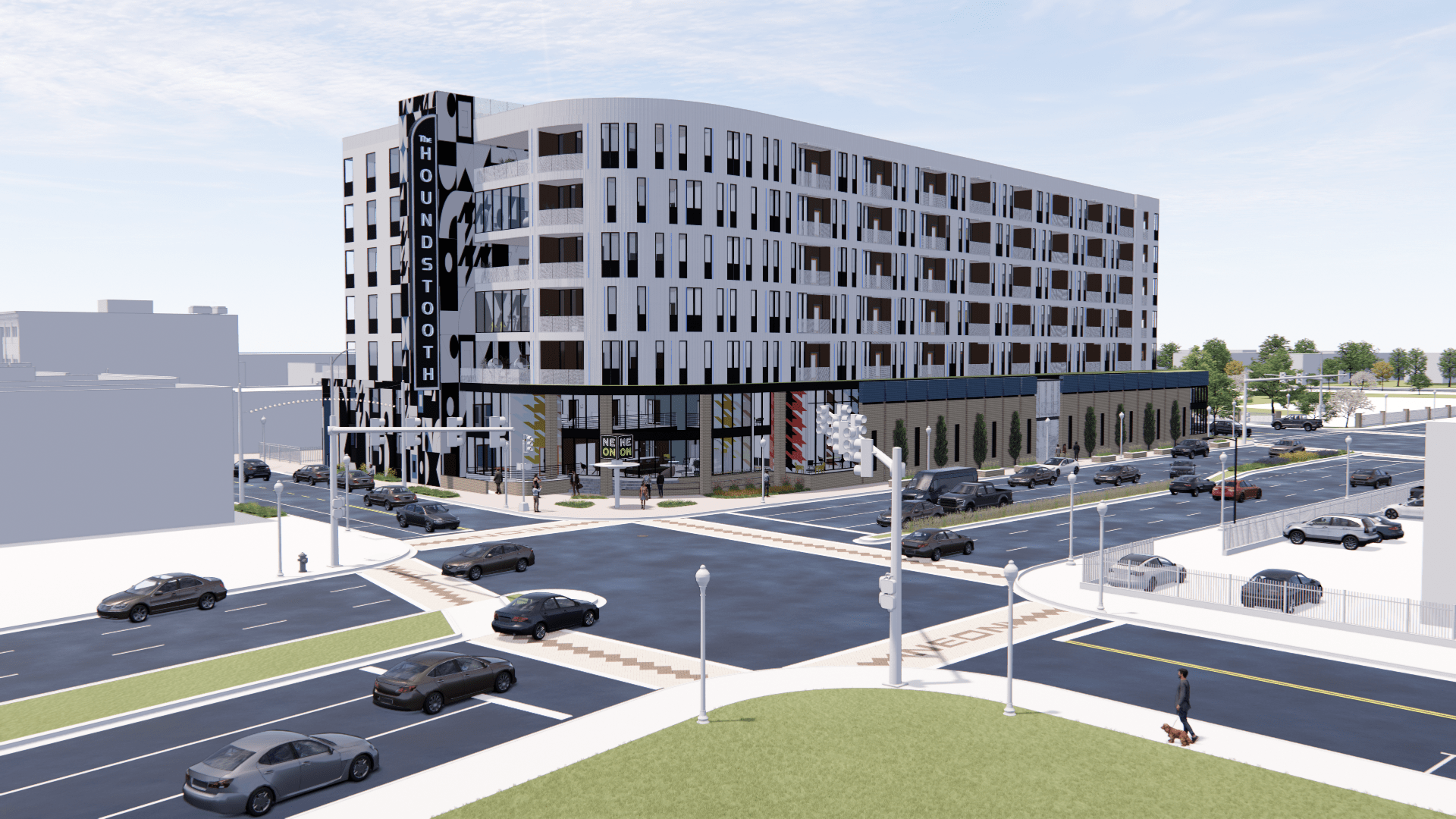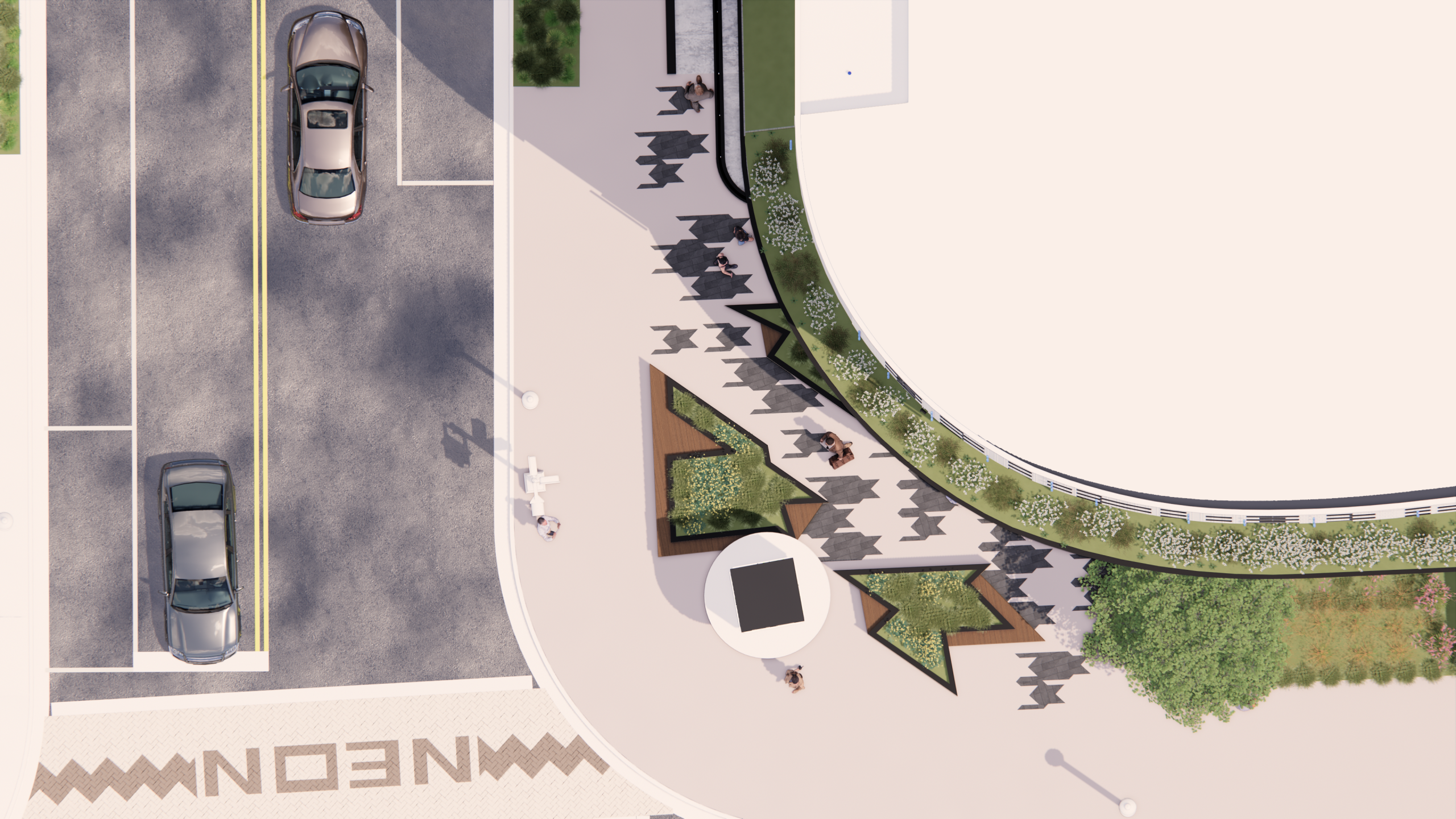In the 1950s and ’60s, new car dealerships beckoned buyers along Norfolk’s “Auto Row,” while travelers came and went from the sleek Greyhound Bus Station. The original station, designed by William Strudwick Arrasmith in the Streamline Moderne style he popularized in the 1930s and ’40s, was a striking example of mid-century design.
Greyhound buses stopped running from the station years ago, but a plan to reimagine the property will create new destinations while honoring the site’s layered history. Arrasmith’s original structure was demolished in the 1960s and replaced with the current building, designed by Norfolk architect Clarence W. Meekin, a recipient of the 1983 AIA Distinguished Service Award. The new project will pay tribute to both architectural designs and acknowledge the legacy of the Freedom Riders, who rode interstate buses into the South to protest segregation. While Norfolk was not on the Freedom Riders’ route, its newly desegregated bus station—made possible by the U.S. Supreme Court’s Boynton v. Virginia decision—symbolized freedom for the community.

The design incorporates the original Brambleton Avenue wall as a plinth for the new five story structure, along with a screen wall offering views into urban gardens for two-story live-work lofts. Street-level spaces will feature an art gallery, a large community room, native plant gardens, a courtyard, and more. A second-story dog park nods to the original hounds.
Houndstooth will serve as the gateway to the NEON District while honoring SCOPE Arena, one of Norfolk’s most beloved and significant architectural landmarks.















